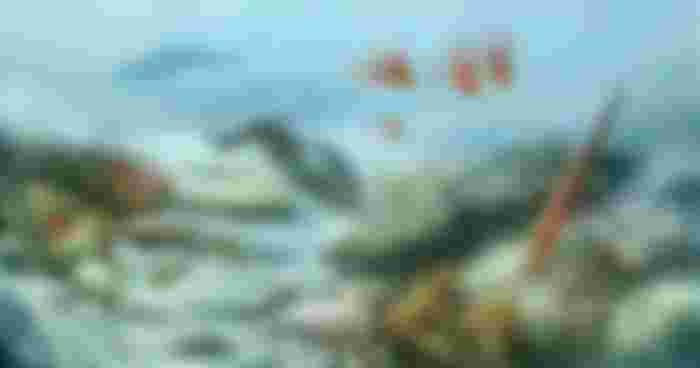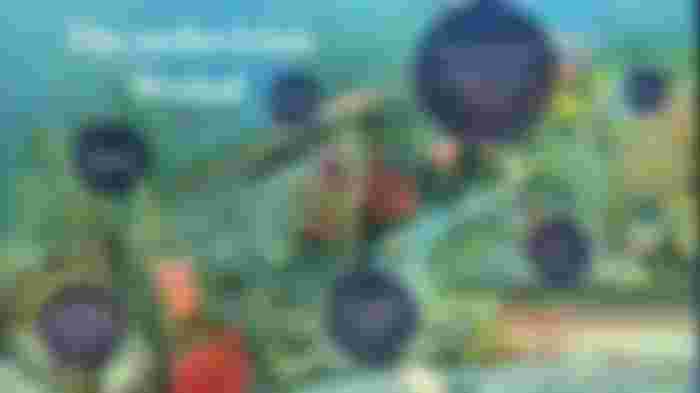
False alarm
The forest of Carboniferous is on fire. The sky-scraping 100-foot-tall Lepidodendron trees are all burning. Black smoke filled the sky. The fire is spreading unusually fast.
Wait, it's not supposed to spread so fast. Then why is it spreading?
Because the oxygen in the air is now 33 percent.
A few feet long dragonfly meganyura, eight-foot monster centipeded arthroplus are roasting alive. Why is the shape of insects so huge?
The answer is the same: oxygen in the air is 33 percent.
Yes, I am talking about Carboniferous during the reign of insects. The Carboniferous Period is 356-296 MYA (Million Years Ago) from today. The world was then covered in rainforests. It's hot all around. Proof-sized grasshoppers, spiders hover around. For now, let the fire burn in the rainforest. We will go back millions of years.

2.
The Palaeozoic Ira is divided into six parts. The first part is Cambrian (541-465 MYA)
The continent of Panocia has collapsed. The three new territories are Lorenzia, Baltica, Siberia and the new continent Gondwana. A few species of trees can be seen at the bottom of the sea where the sunlight reaches, but there are no trees on the shore. Ancient samurai walk underwater. Their name is Trilobite. The majority of them were previously thought to be among the arthropods because of their abundant fossils. However, this was proved wrong. The bodies of the trilobites were covered with armor made of calcium carbonate, so their bodies could easily turn into fossils. At the bottom of the ocean, microbes have come together to form thick mats. The excavation caused the microbial layer to break down, and the microbes that could not survive in the presence of oxygen became extinct. Oxygen-rich water touched the ocean floor, creating a new chapter, many species that depended on that microbial layer became extinct. Massive changes in the ecosystem were real. Many new species were created. This phenomenon is also called Cambrian eruption.
There is widespread controversy over the Cambrian period. Originally the Cambrian period ended after two extinction events.
The first is the End-botomian extinction event. It happened in the Mid Cambrian (513-509 MYA). According to the hypothesis, due to the decrease in the amount of oxygen, the carbon cycle began to change drastically. At this time a volcanic eruption caused a sudden increase in greenhouse gases in the atmosphere. This led to abnormal temperature rises and many species died. It took the earth 4 million years to overcome this condition.
The second is Dribasian Extinction (502 MYA). At this time there was a sudden surge of toxic hydrogen sulfide in the atmosphere. It also poses a threat to various aquatic animals.

3.
The surroundings are scorching hot, the surroundings are satiated, a few small liverworms can be seen in the distance. The temperature is 45 degrees Celsius. Thick water all around. Wait, why so much water? And why is it so hot?
Because this is the Ordovician Period (485-443 MYA). Remember the Cambrian consequences? The world was filled with a bunch of greenhouse gases?
The temperature also rose with the greenhouse. The water level kept rising with the temperature. Gondwana sank much of the continent.
A small sacchambuspis that roams in shallow water is one of the many species that have evolved in the Adrovision. The fish did not notice that for a long time two pairs of predatory eyes were watching him. The eyes look like an orthoseres, a squid-like creature from the Mollusca period was a terror to the Adrovision fish. Don't fill your stomach with a sacchambuspis, need something more for lunch, orthoserasata in search of new food. Fish are gathering near the shore to eat plankton, and if we get there on time, we will have a feast today.
The end of the Adrovisian era was strange. The second largest extinction event in the history of the world is the Adrovisian-Silurian Extinction Event. The first is the Permian-Triassic Extinction event. That story will be told in a timely manner.
I have already said that it is very hot in Adrovishian, if you stand for a while, your body gets wet, the weather is still. This situation has been going on for four crore years, all animals are accustomed to it. What will happen if it gets very cold in a hurry?
Several days of continuous volcanic eruptions, in which large amounts of silicate rocks with magma accumulated on the earth's surface. The nature of silicate rocks is that they can absorb carbon dioxide. Carbon dioxide absorption began. The carbon dioxide in the atmosphere dropped from 6,000 ppm to 4,500 ppm as the rocks filled their stomachs. That's what was supposed to happen. The ice age came down to earth in a hurry. Extensive damage to aquatic animals. The bryozoars became almost extinct. 49% (there is controversy over this value. According to Wiki, this is it. But if it is wrong, it will be corrected). Ordovician life was strange. He was born with the rise of the earth's temperature, he died with the decrease of the temperature. It took the earth 5-15 million years to overcome the ice age. After being dormant for such a long time, the earth enters a new era called Silurian.
4.
The ice age is gone. The climate is now temperate. There is no more heat. There are lots of small islands in the sea. Happily, the ice age has turned the world upside down. Each island has its own ecosystem. Moss and ferns have evolved into some new species. Today's trees are their descendants.
A few leeches can be seen in the water. They are floating on the body of a fish. The fish looks a bit like modern fish, the scales are visible on the body, the type of face is also recognizable. Silurian was the first fish to develop the class Osteoarthritis. The climate of Silurian was ideal for the development of fish. The fish are divided into three parts, the first part is the jawless fish. The second part is the shark and stingra and the last part is the bony fish. Tetrapods will form from a part of the bony fish. From there, dinosaurs like Diplodocus, Argentinosaurus or Albertnectes will evolve.


